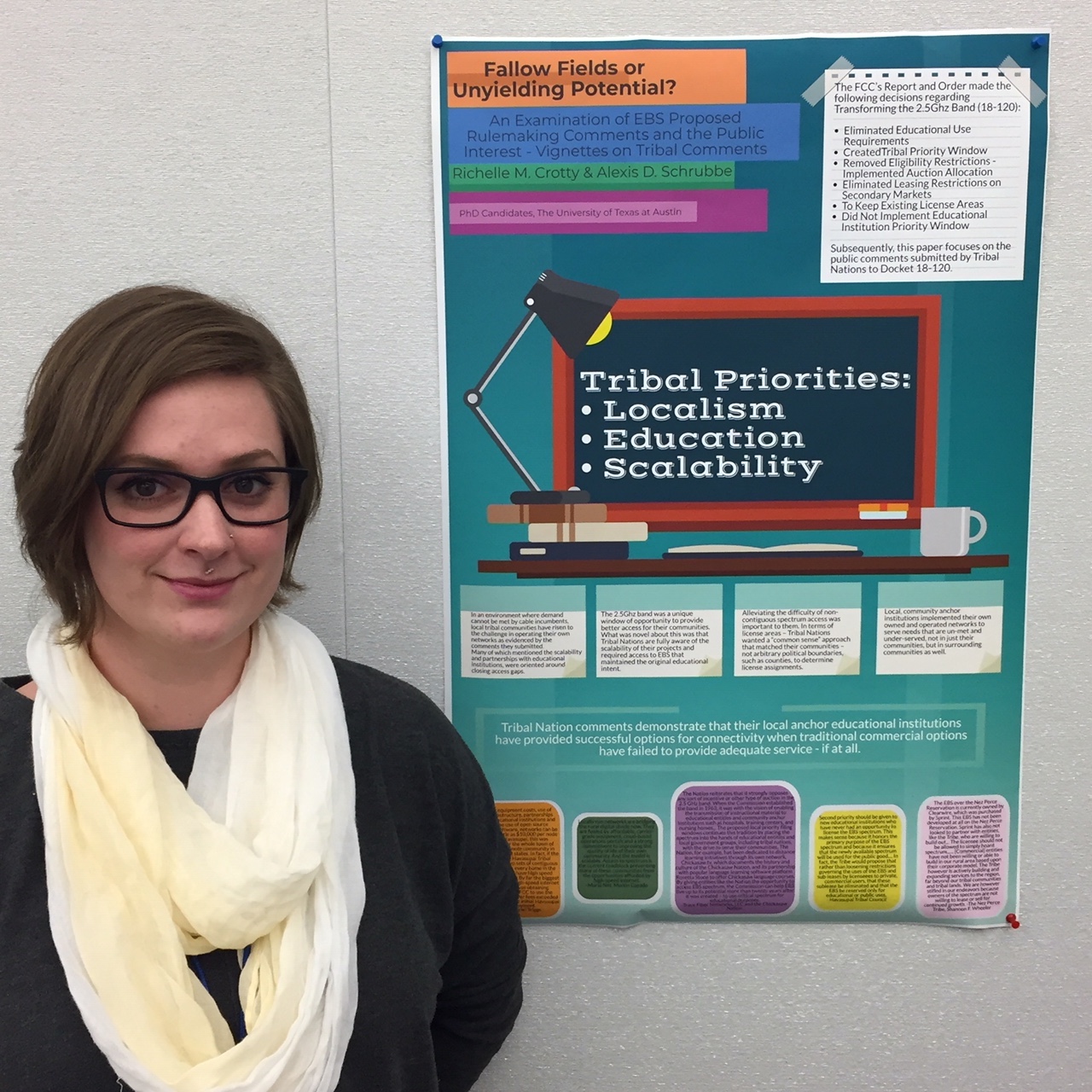TIPI awarded Richelle Crotty a travel fellowship to TRPC47 to present her poster: Fallow Fields or Unyielding Potential? An Examination of EBS Proposed Rulemaking Comments and the Public Interest.
Abstract
- Who filed comments in Docket 18-120: Transforming the 2.5GHz Band? Do the comments represent public or private actors, experts or stakeholders, or individuals?;
- What themes are present in the public comment and ex parte filings?;
- Did the FCC “fully involve the public” (FCC, 2008) in its reconsideration of the EBS Spectrum rules? In particular, whether or not those publics who would benefit most from improving access to mobile broadband technologies were considered, such as those facing geographical barriers, those in tribal lands, and rural communities.
The purpose of this policy analysis is to explore themes present in the FCC’S EBS NPRM through the public comment system and through transcripts of ex-parte presentations and filings.
Also Presenting
Sharon Strover, Martin Johannes Riedl, and Selena Dickey also presented their research, Scoping New Policy Frameworks for Local Broadband Networks at TRPC.
Abstract
Over many years, locally-initiated and operated broadband infrastructure projects have attempted to resolve the last-mile dilemma. Many generations of do-it-yourself (DIY) network efforts that are either wireless, such as community mesh networks, or wired, such as fiber cooperatives, exist, but in the U.S. scaled developments have been stalled for a variety of reasons that include regulatory prohibitions. This research examines a current ‘third wave’ of community networking, marked by local and DIY efforts as well as technological innovations. We investigate approaches that are technological, managerial, and also aimed at regulatory and economic incentives that may be appropriate in the U.S. We argue that this ‘third wave’ of community networking efforts and technology demonstrates new connectivity models that can solve some of the nation’s broadband problems, especially when accompanied by supportive federal and state policies. The technological, organization, and market implications of the third wave of community networks suggest new policies helpful to provide improved broadband services in various regions amidst incumbent protectionism.
View the full paper.
